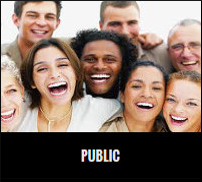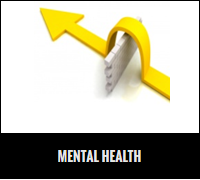A lot has been written and even more said about love. Our team of professionals, interns and volunteres has been investigating available research, concepts and books in order to establish the present state of knowledge regarding love.
- What Is Love?
- Why does it feel so good to receive it?
- Why do we feel pain when deprived of it?
- What is unconditional love?
- Is it possible to love ourselves and others unconditionally?
- Are there tools that can teach us to love unconditionally?
- Do we deserve unconditional love from others?
- What does self-sufficiency mean when it comes to loving self?
Learning to self-generate positive emotions by learning Loving-Kindness Meditation (LKM) is an ancient Buddhist mind-training practice. Frederickson’s idea of Love is what she redefines as micro-moments of connection between people—even strangers. She demonstrates that our capacity for experiencing love can be measured and strengthened in ways that improve our mental and physical health and longevity. Fredrickson’s 8 year research study shows a healthier Vagal nerve – and her conclusion is that love is nourishment – like air, food, and water.
2. Bruce Lipton – 2013
The Honeymoon Effect: A state of bliss, passion, energy, and health resulting from a huge love. Unfortunately for most, the Honeymoon Effect is frequently short lived. Bruce H. Lipton, Ph.D., best-selling author of The Biology of Belief, describes how the Honeymoon Effect was not a chance event or a coincidence, but a personal creation. This book reveals how we manifest the Honeymoon Effect and the reasons why we lose it. This knowledge empowers readers to create the honeymoon experience again, this time in a way that ensures a happily-ever-after relationship that even a Hollywood producer would love. Lipton covers the influence of quantum physics (good vibrations), biochemistry (love potions), and psychology (the conscious and subconscious minds) in creating and sustaining juicy loving relationships.
3. Helen Fisher – 2004
In Why We Love, renowned anthropologist Helen Fisher offers a new map of the phenomenon of love—from its origins in the brain to the thrilling havoc it creates in our bodies and behavior. Working with a team of scientists to scan the brains of people who had just fallen madly in love, Fisher proved what psychologists had until recently only suspected: when you fall in love, specific areas of the brain "light up" with increased blood flow. This sweeping new book uses this data to argue that romantic passion is hardwired into our brains by millions of years of evolution. It is not an emotion; it is a drive as powerful as hunger.
4. Jean Watson – 1991 & 2008
5. Elaine Hatfield - 1985
Two different types of Love: Compassion and Passionate of love.
- Compassionate love involves feelings of mutual respect, trust and affection, while passionate love involves intense feelings and sexual attraction.
- Passionate Love: "A state of intense longing for union with another. Passionate love is a complex functional whole including appraisals or appreciations, subjective feelings, expressions, patterned physiological processes, action tendencies, and instrumental behaviors. Reciprocated love (union with the other) is associated with fulfillment and ecstasy. Unrequited love (separation) with emptiness, anxiety, or despair".
6. John Lee – 1973
How people love –
Three primary styles:
Three secondary styles:
7. Robert Sternberg – 1986
Triangular theories of Love: Intimacy, Passion, and Commitment
- Intimacy – Which encompasses feelings of attachment, closeness, connectedness, and bondedness.
- Passion – Which encompasses drives connected to both limerence and sexual attraction
- Commitment– Which encompasses, in the short term, the decision to remain with another, and in the long term, plans made with that other.
In a study done by Michele Acker and Mark Davis in 1992, Sternberg's triangular theory of love was tested for validity. By studying a population that extended outside the typically studied group of 18 to 20 year old college students, Acker and Davis were able to study more accurately the stages of love in people. Some criticism of Sternberg's theory of love is that although he predicted the stages of a person's love for another person, he did not specify a time or point in the relationship when the stages would evolve. He does not specify whether the different parts of love are dependent on duration of relationship or on the particular stage that relationship has reached. Acker and Davis point out that the stage and duration of the relationship are potentially important to the love component and explore them
8. Stephen Gilligan - 1997
Gilligan’s work, Self-relation approach is the understandings and processes of sponsorship. According to Gilligan, “the principle of sponsorship is the cornerstone of self-relations. The word "sponsorship “comes from the Latin "spons", meaning, "to pledge solemnly". Sponsorship is a vow to help a person
(Including one's self) to use each and every event and experience to awaken to the goodness and gifts of the self, the world, and the connections between the two. The skills of love can be practiced by learning the principles of self-relations.
9. John Gottman – 1995 – 2013
The Gottman Method for Healthy Relationships:
- Build Love Maps
- Share Fondness and Admiration
- Turn Towards
- The Positive Perspective
- Manage Conflict
- Make Life Dreams Come True
- Create Shared Meaning
- Trust
- Commitment
10. Thomas Lewis, MD, Fari Amini, MD, Richard Lannon, MD – 2001
A General Theory of Love draws on the latest scientific research to demonstrate that our nervous systems are not self-contained: from earliest childhood, our brains actually link with those of the people close to us, in a silent rhythm that alters the very structure of our brains, establishes life-long emotional patterns, and makes us, in large part, who we are. Explaining how relationships function, how parents shape their child’s developing self, how psychotherapy really works, and how our society dangerously flouts essential emotional laws
11. Marci Shimoff – 2012
Love for No Reason introduces a new way of thinking about love, defining it as an inner state of being that anyone can access at any time, and in any circumstance. To experience what Shimoff calls “Love for No Reason,” one doesn’t need to have the right partner, the perfect body, an ideal child, or a great job. As the book demonstrates through the examples of those who are living in this state of unconditional love, when you love for no reason you bring love to the world around you, rather than expect love from it. Supported by the latest scientific research on the biochemistry of love, Shimoff outlines a revolutionary program to develop and nurture more love from the inside out.
12. Urie Bronfenbrenner – 1981 – 2004
Hendrix is a couple-therapist and the author of the relationship self-book, ‘Getting the Love You Want’, and many others. His idea of attaining loving, supportive relationships is through better communication.
14. James P Gills, MD - 1993
In his book, Love, Fulfilling the Ultimate Quest, Gills discusses what real love is under God. He mentions how ancient Greek used five different words for various types of love: epithumia, eros, philia, storge, and agape. In addition to these five, Gills adds two more types of love selfishness and commitment.
15. Stefan Deutsch – 1985
His Continuum Theory of Human Development, offers a logical/experiential proof that indeed love is nourishment. Deutsch likens loving energy to air, food and water – and explains that understanding this has serious implication for the way need to love other and self – unconditionally. Deutsch creates a set of developmental tools he feels will help anyone to move toward unconditionality.
16. Maslow's hierarchy of needs places self-actualization at the peak. He maintains that those who have reached self-actualization are capable of love.
17. Erich Fromm – 1963
"Object," or "faculty,": Many people pursue objects or affection, or objects to love, and correspondingly treat them as possessions. Fromm asserts that Love is the faculty or ability to Love in its different forms: brotherly love; romantic love, etc. Since Love is an art to be practiced, Fromm asserts that it can only be practiced in freedom with one another. In other words, people cannot treat others as objects or possessions to be controlled for one’s own egotistical or selfish purposes. Such behavior result in certain destruction and never to attain true Love.
The five love languages are:
-Quality Time
-Words of Affirmation
-Gifts
-Acts of Service
-Physical Touch








